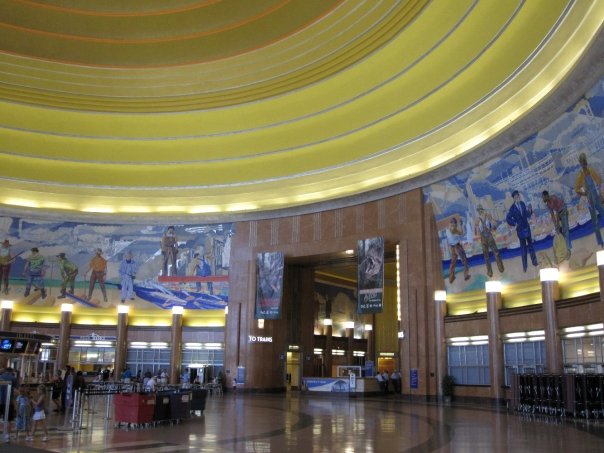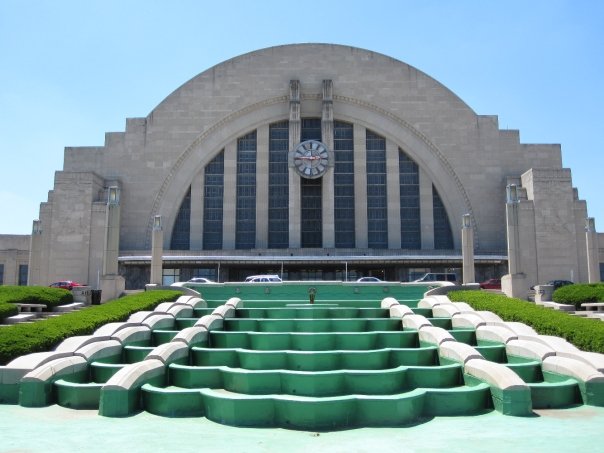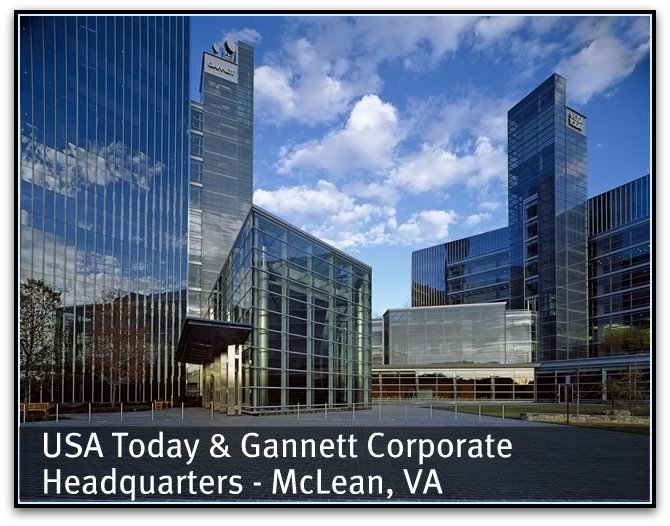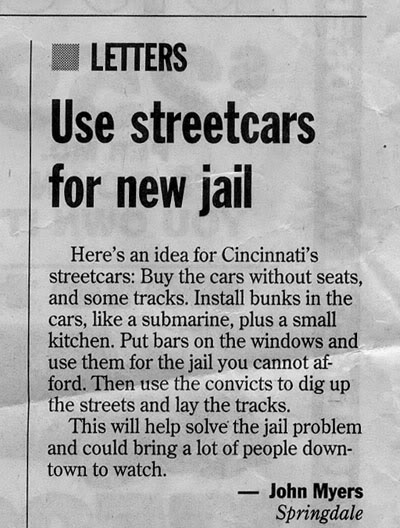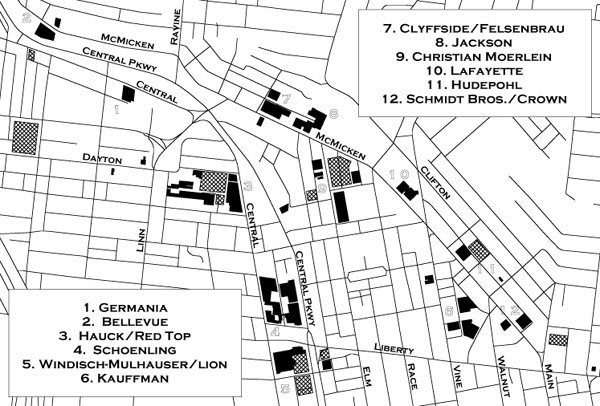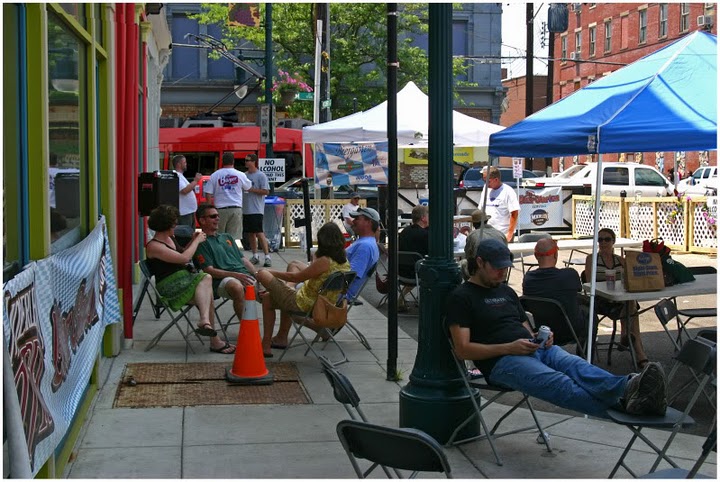One day in 1934, New York mayor Fiorello La Guardia was on a TWA flight back home from Chicago, and his ticket indicated New York as the plane’s final destination. However, the plane landed in Newark, New Jersey, as that was the only airport in the New York region open to commercial aviation at the time. The stubborn mayor refused to get off the plane in Newark, insisting that he be brought to the city indicated on his ticket. “Newark is not New York,” he exclaimed. His flight ultimately continued to Floyd Bennett Field in Brooklyn, and when the plane landed, the mayor — never willing to let a juicy PR moment go to waste — hosted an impromptu press conference to reporters about New York City’s need for its own airport. Within five years, an airport would be built in Queens that would bear Mayor LaGuardia’s name.
A great deal of virtual ink has been expended in recent months regarding the proposed 3C passenger rail line that will link Ohio’s three largest cities and serve as the foundation for future development of a true high-speed rail line across the state. In regards to the station location for the Cincinnati end of the 3C line, we face a dilemma not unlike the one Mayor LaGuardia faced in New York. If the rail line ends in Sharonville, does the 3C line really serve one of its three namesake C’s? Will there come a day when Mayor Mallory refuses to exit the train at Sharonville, insisting that it continue all the way into the city limits of Cincinnati?
There is nothing inherently wrong with having an intermediate 3C station at Sharonville, as it would provide convenient service to suburban riders in much the same way the Route 128 station on the Northeast Corridor gives Boston-area Amtrak passengers a way to avoid having to travel all the way to Back Bay or South Station in order to catch a train going the opposite direction. Assuming we want the 3C service to actually serve Cincinnati, though, the question then becomes: Where does the train go once it goes south of Sharonville?
Previous generations of Cincinnatians blessed us with a magnificent train station in the form of the Union Terminal complex, which opened for passenger service the year before Mayor LaGuardia’s famous outburst in Newark. As one of the most architecturally-significant train stations in the world, and located within a short distance of downtown, Union Terminal is the natural place to terminate the 3C line. The station is already served by Amtrak’s Cardinal three times a week in each direction between New York and Chicago, and has the facilities needed to serve intercity rail passengers such as a waiting room, ticketing office, baggage service, restrooms, etc. In time, Union Terminal could also easily accommodate additional passenger facilities such as expanded restaurant options, car rental facilities, and a streetcar or light rail connection to rest of the city. Indeed, there is near-universal agreement that in the long term, Union Terminal should once again fulfill its proper role as a stunning gateway to Cincinnati for rail passengers.
In the short term, however, 3C service at Union Terminal faces a number of logistical hurdles. Although the station once boasted the capacity to serve 216 trains per day (108 inbound and 108 outbound), Union Terminal’s current capacity is severely reduced. The Southern Railway demolished the passenger concourse and platforms in 1974 in order to accommodate double-stacked freight trains. Many of the station’s former passenger facilities, especially the concentric ramps used to provide bus and taxi access to the station, are now home to the Cincinnati History Museum and the Museum of Natural History and Science. Most crucially, the railroad tracks that serve Union Terminal through the Mill Creek Valley from the north are heavily congested with freight traffic during most hours of the day and night, and lack the capacity for frequent passenger service. Mitigating these limitations is certainly doable with the right amount of money and creative thinking, but doing so will require several years of planning and construction, and isn’t something that’s likely to happen during the first few years of 3C service.
With that in mind, attention shifts to the location of a temporary station that will serve the city until the capacity issues at Union Terminal can be resolved. Here are a few of the most likely options that have been put forward.
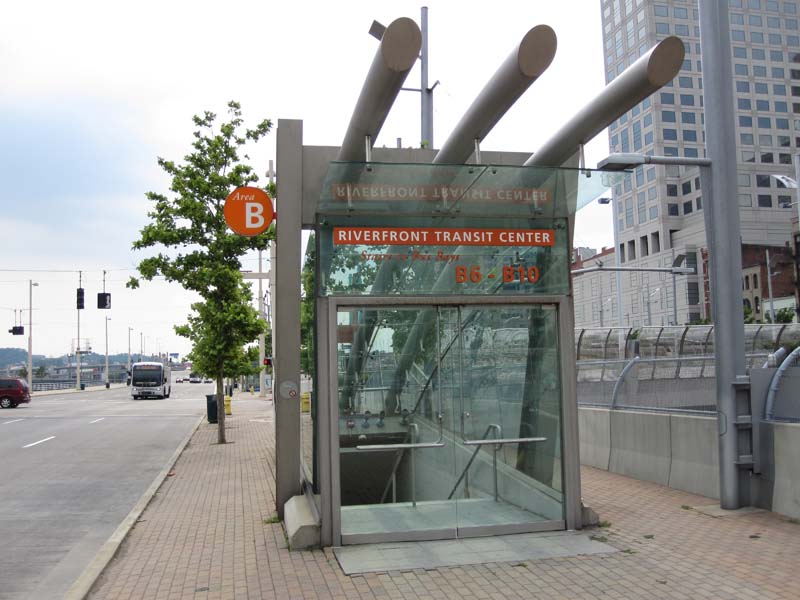
Riverfront Transit Center
Located under Second Street along the downtown riverfront, the Riverfront Transit Center (RTC) was created out of space left over from the reconstruction of the adjacent Fort Washington Way in 2002. Rather than spend the considerable money it would take to fill in the space with dirt, planners wisely decided to create a space that could one day be used for some form of passenger rail service. (In the meantime, the RTC serves as a convenient staging area for charter buses during sporting events at the Great American Ball Park and Paul Brown Stadium.) Unlike other proposed 3C station locations, the RTC is within easy walking distance to the Central Business District, and would not require connecting transit service to reach downtown.
However, the Riverfront Transit Center lacks the passenger amenities needed for intercity rail travel such as a climate-controlled waiting area, baggage facilities, etc. The enclosed nature of the station would require costly air handling systems to vent diesel fumes generated by idling passenger trains, and the station lacks the vertical clearance needed to accommodate the double-deck passenger trains that are often used for intercity travel. Additionally, reaching the station by rail from the west would require the same capacity improvements through the Mill Creek Valley needed to provide service to Union Terminal, and reaching RTC from the east would require the complete rehabilitation of the Oasis Line and the construction of connecting tracks along Pete Rose Way. While the RTC is ideally situated to serve as a station for future light rail service, it is not a realistic option for intercity passenger rail service.
Montgomery Inn Boathouse
In light of the problems associated with bringing intercity rail service into the Riverfront Transit Center, a location near the Montgomery Inn Boathouse on Riverside Drive was proposed. While this location avoids many of RTC’s issues, it would still require the rehabilitation of the entire length of the Oasis Line, and possibly preclude the Oasis Line from being used for future light rail service. Additionally, the location is separated from the Central Business District by several blocks and the I-71 / I-471 / Columbia Parkway spaghetti junction, and nearby residents objected to the noise and pollution that would be caused by diesel trains.
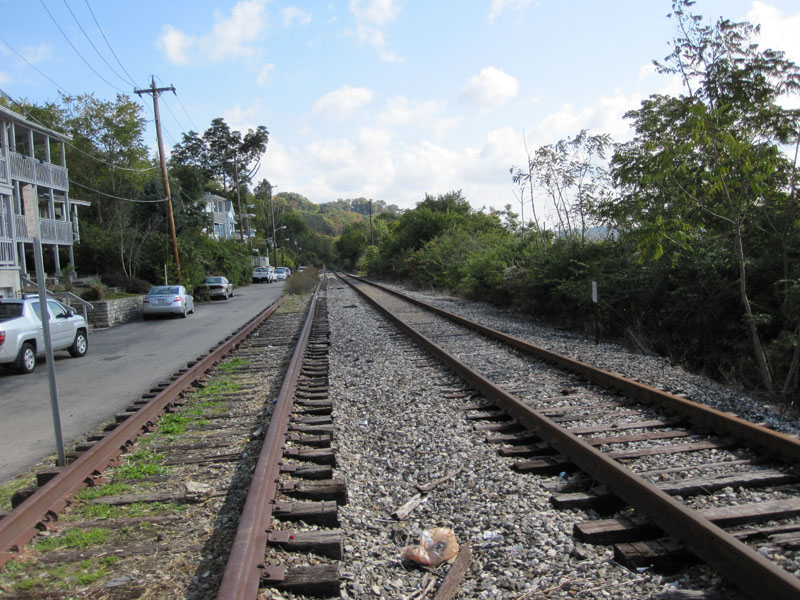
Lunken Airport
With the Riverfront Transit Center and the Montgomery Inn Boathouse locations apparently removed from contention, officials suggested a site along the Oasis Line east of Mount Lookout, roughly adjacent to Lunken Airport. While this location avoids the issues with the RTC and the Boathouse, it would still require the rehabilitation of many miles of the Oasis Line. Critics rightly argue that the money used to rehabilitate the Oasis Line for temporary 3C service would be better spent toward a more permanent solution to the capacity issues through the Mill Creek Valley toward Union Terminal. Located on the far east side of the city, the Lunken Airport site would also require a lengthy shuttle bus ride to downtown, and be very inconvenient to customers coming from the West Side and Northern Kentucky.
Bond Hill
Within the past few weeks, Cincinnati City Council passed a resolution naming Bond Hill as the city’s preferred location for a temporary 3C station. Like the Lunken Airport location, a 3C station in Bond Hill would also be located several miles from the Central Business District and require a coordinated shuttle bus connection to downtown. Unlike the Lunken Airport location and other proposed locations along the Oasis Line, however, a Bond Hill station would only require the rehabilitation of a significantly shorter distance of the Oasis Line, and offer reduced travel times compared to Lunken Airport or the Boathouse. Bond Hill is conveniently served by the Norwood Lateral Expressway which connects to I-71 and I-75, and is far more convenient to the city’s Western Hills neighborhoods.
The station facilities at Bond Hill need not be extravagant, given that it would be a temporary facility. Unlike the massive amount of construction needed to build Fiorello LaGuardia’s airport on the edge of Long Island Sound, a temporary 3C station at Bond Hill that provides passenger rail service to the city of Cincinnati would merely require a simple building to house a waiting room, restrooms, and ticket office, along with a train platform and parking lot. Once the Bond Hill station is built and in service, our attention can then shift to the larger task of improving rail capacity through the Mill Creek Valley. Is Bond Hill the perfect solution? No, but it’s by far the least problematic of several problematic solutions, and will serve as an important stepping stone toward the ultimate goal of bringing frequent passenger rail service back to its rightful place at Union Terminal. Perhaps there is another solution to Cincinnati’s 3C dilemma that has yet to be explored, but for now, the way for 3C passenger rail service to move forward is through Bond Hill.
David Cole, a native of Fort Thomas, spent several years working for Dattner Architects in New York City, a firm with a strong background in transit and infrastructure design. David is the author of the Metro Cincinnati project in which he proposes an extensive rapid transit system for Cincinnati, and will be starting graduate-level studies for his Master of Architecture degree this fall at the University of Cincinnati’s College of Design, Architecture, Art and Planning.
